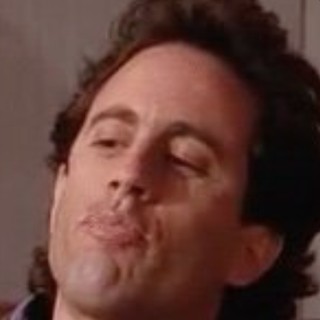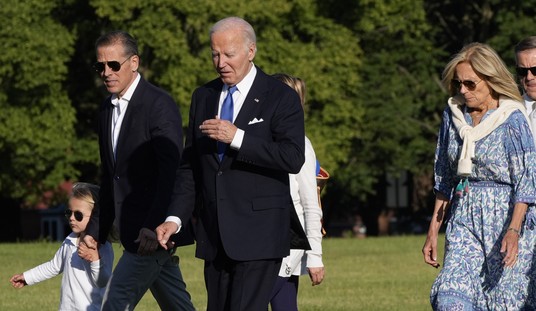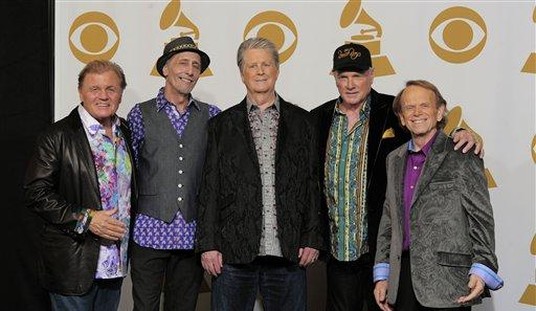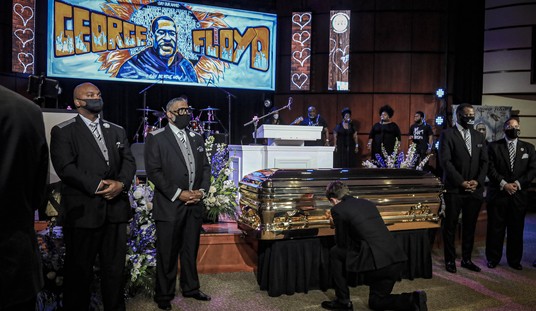
A piece appeared in The Washington Post today in which Brookings Institute member Elaine Kamarck makes the case that Democrats aren’t actually the far left-wingers they appear to be. I know what you are thinking, but it’s worth exploring the question and what it means.
To hear the Republican Party and some members of the press tell it, the Democratic Party has been taken over by its left wing. But that conclusion is less foregone than the headlines suggest. The Democratic Party today remains, as it has been for some time now, a center-left party and if it is to win future elections it will have to stay there.
I’ve seen variations of this take a few times in the last several months and I’m still not sure I buy it in any fashion, but there is data to back up the idea that Democratic voters tend to still be generally moderate. What follows is some of the data Kamarck is citing for her contention.
Galston looks at ideology among self-identified Democrats over a six-year period — 2013 to 2018 — and compares it with self-identified Democrats about 20 years ago, at the start of the century. The big movement to the left occurred primarily among white Democrats: In recent years, 54 percent of white Democrats identify as liberals — that’s up from 34 percent of white Democrats from 2001 to 2006. For blacks and Hispanics, however, the story is very different. A large share of black Democrats and Hispanic Democrats (40 percent and 36 percent, respectively) identify as moderates. And while self-identified conservatives make up the smallest part of Democratic voters, 24 percent of black Democrats and 23 percent of Hispanic Democrats identify as conservatives, compared with only 12 percent of white Democrats. These findings are especially significant given that black voters are a large and powerful segment of the Democratic vote — especially in primaries, which have lower turnout than general elections.
A second word of caution about the party’s supposed leftward tilt comes from a study of candidates in the 2018 primaries that I co-authored with Alex Podkul. We saw an outpouring of enthusiasm on the left that resulted in a substantial upsurge in candidates running in Democratic primaries as progressives. But they tended not to win. Establishment Democrats won 35 percent of their primaries, while progressives won 26.6 percent of their primaries.
Do these voter identification breakdowns prove that Democrats are still the center-left party? I don’t think so.
Kamarck’s first mistake is conflating Democratic voters with the party. While voters may identify one way, ideology is not the strongest driver of voters nor does it speak to the political direction of the national party as a whole. Take a recent poll in Iowa, for example, which showed around 40% of Bernie Sanders voters considered Joe Biden their 2nd choice. Nearly the reverse was true for Biden voters preferring Sanders 2nd as well.
Both candidates also appear as the first or second choice for many poll participants. Forty percent who list Sanders as their first choice state they would switch to Biden if Sanders failed to advance in the Iowa caucus. Thirty percent who list Biden as their first choice indicated they would switch to Sanders.
Joe Biden and Bernie Sanders are as far apart as you can get in the Democratic primary field. Yet, there’s massive crossover among their voters. Why? Because rigid ideology is not the primary driver for many voters. While Kamarck clings to breakdowns showing most Democrats still consider themselves “moderates,” their voting patterns simply don’t show that. The end result, no matter how they identify, has been Democratic voters elevating far-left wing politicians within their party.
Which begs the question of whether it matters at all if Democratic voters still think of themselves as “center-left?” The reality on the ground within the Democratic party matters and it’s undeniable that it has been taken over by it’s left wing. You can find recent examples here, here, and here, and that’s just the past 24 hours. You can also look at the power being wielded by those who endorse schemes like Medicare for all, reparations, the Green New Deal, and trash capitalism as “irredeemable.” These are the leaders of their party.
Kamarck concludes her article with this point.
All of which is to say that the balance of power both in the party and in the House Democratic Caucus rests not with progressives but with moderates. As the Republican Party moves closer and closer to Trump, many of its voters are moving away. But to think that a formerly Republican-leaning woman living in a suburb is going to move, in one election cycle, all the way across the political divide to the far left of the Democratic Party is to fool oneself into defeat.
At this moment in time, and for the near future, the Democrats need to manage a big tent. This may change if Rep. Alexandria Ocasio-Cortez (D-N.Y.) becomes speaker or president. But if progressives overestimate their appeal in the nation as a whole, she will never get there.
She’s not wrong here. The far-left insanity that we’ve seen following the 2018 election is indeed going to make it difficult for Democrats to keep moderate, suburban voters in their coalition. The problem for Kamarck’s hope for a big tent is that the Democratic base and it’s party’s leadership (both official and unofficial) have no desire to backtrack toward the center. Even if some Democratic leaders were willing to push for a more moderate platform, would the most outspoken, influential voices in their party to sit back and let that happen? Of course they wouldn’t. When you’ve got the face of your party, Rep. Alexandria Ocasio-Cortez, saying capitalism is “irredeemable” in a public setting, there’s no room for centrist ideas anymore. When almost all of your majority can’t even be bothered to vote to stop illegal aliens from purchasing guns or directly condemn anti-Semitism, there’s no big tent anymore.
I believe there are some Democratic Congressional members who won in moderate districts who would like to pursue centrist ideas, if for no other reason than their own electoral preservation. That isn’t going to happen though because recent events have shown they have zero power within their own party, which means the leftward lunge by the Democratic shot callers is going to continue.
So while Kamarck may attempt to make the case that Democrats are still centrists in her piece, and she may even have some empirical data to show they identify that way, the ultimate question is again, does it matter? Given the direction the party has headed and who’s leading the way, the answer is an unequivocal no. It simply doesn’t matter. The transformation of the Democratic party into the image of their newest, most extreme voices continues apace.
————————————————-
Enjoying the read? Please visit my archive and check out some of my other articles.
Please follow and share on Twitter: @bonchieredstate















Join the conversation as a VIP Member